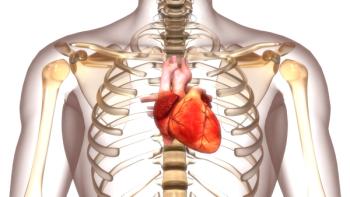
How patients benefit from hospital and outpatient imaging partnerships
Outpatient imaging provides cost savings and convenience to patients while creating greater satisfaction for physicians
Every health care stakeholder wants to achieve the highest possible quality without undue cost or complexity. Large hospitals and health care systems play an important role in health care delivery, not only for the services they provide to local communities, but also because they can be thought leaders and advocates for new advances in medicine.
Increasingly, large health care systems in the U.S. are partnering with outpatient imaging centers to deliver high-quality services—from simple X-Ray exams to sophisticated interventional radiology and AI-enabled imaging. These partnerships are crucial to the health care ecosystem. The majority of imaging procedures can be performed in most outpatient facilities, and many hospital partners understand how such partnerships can help them maximize their resources while enhancing the
The hospital opportunity
Outpatient centers can provide both clinical and operational efficiencies that would be difficult for hospitals to achieve in a given specialty area. Certain outpatient practices have honed an extremely streamlined delivery model, using benchmarks and metrics for scheduling, resource allocation, and other operations. These and other optimizations can translate into greater
When a hospital leverages an outpatient provider’s best practices, together they can help influence policy in that specialty area. In imaging, both parties can marshal their industry expertise and align their efforts to shape government legislation and ensure fair insurance reimbursement rates. Patients then benefit from improved policies. In fact, payers sometimes design insurance plans—co-payments, network participants, approvals, and reimbursement—to incentivize patients to choose outpatient care options. Carriers recognize the cost-benefit of outpatient imaging.
The physician perspective
Physicians also benefit from alignment of outpatient centers and hospitals. Referring physicians often report that
For example, radiologists who work in highly specialized outpatient centers can focus on their sub-specialty areas and forge collaborative relationships with patients and referring physicians. They can work as practice builders, function as part of the fabric of the treatment plan and collaborate with primary care physicians about diagnosis and clinical assessment.
A recent survey shows that radiology has one of the highest burnout rates among physician specialties. A strategic hospital and outpatient center partnership can create wider opportunities for radiologists and greater satisfaction for referring physicians. Radiologists in specialized outpatient centers can educate referring physicians on clinical indications, for example, and work with emerging technology such as artificial intelligence.
The patient experience
Patients are increasingly understood as consumers of health care, with all the expectations of retail consumers—quality, convenience, cost-effectiveness, and service. In health care, this means patients want convenient access to their medical appointments, high quality with transparent pricing, and a patient-centric focus.
Hospitals can extend their geographic reach by partnering with multi-site outpatient centers. When properly executed, care continuity is preserved even when patients visit other outpatient centers in the network. Patients can visit the site most convenient to their home or office. A hospital is a limited access point, which can make appointment scheduling difficult for a patient to manage. When patients find it easier to access imaging services, they are more involved in their care.
Patients, especially those with high-deductible health care plans, are increasingly conscious of health care costs. In an outpatient center, they can expect to pay 30% to 40% less than in a hospital setting. Patients want to know that they are receiving value for every health care dollar they spend.
A valuable partner
Employment in outpatient care centers is
Victoria Bedel is the senior vice-president of northeast operations for
Newsletter
Stay informed and empowered with Medical Economics enewsletter, delivering expert insights, financial strategies, practice management tips and technology trends — tailored for today’s physicians.








